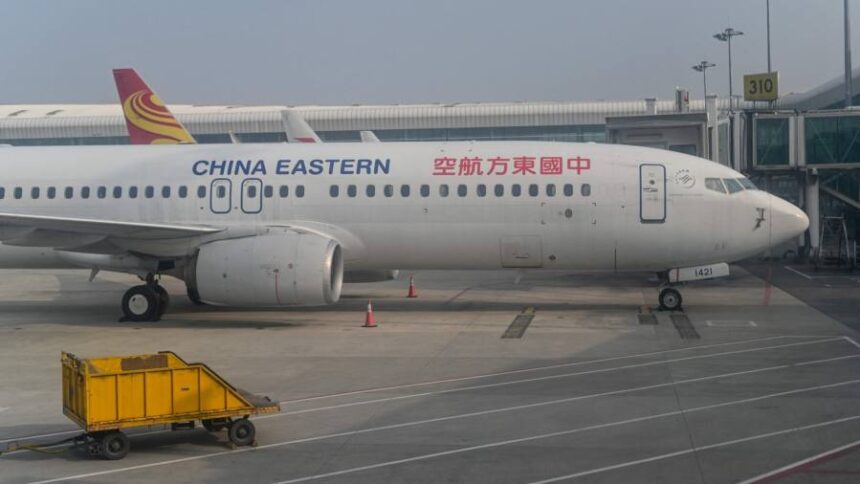Receive free Airlines updates
We’ll send you a myFT Daily Digest email rounding up the latest Airlines news every morning.
China Eastern Airlines has extended its three-year lossmaking streak as international travel to and from the country remains depressed despite the removal of pandemic travel restrictions.
China Eastern, one of the country’s three largest carriers, reported a net loss of Rmb6.3bn ($864mn) for the first six months of the year, improving from a loss of Rmb18.7bn in the same period last year. Revenue increased from Rmb19.4bn to Rmb49.4bn.
The subdued results follow a similar performance from Air China, the flag carrier, which improved to a net loss of Rmb3.4bn from Rmb19.4bn in the first half. China Southern Airlines also logged losses.
Inbound China flights have only recovered to about 34 per cent of pre-pandemic levels in the first four months of this year, according to the industry body International Air Transport Association. International long-haul flights, an important market for China Eastern, were less than 6 per cent of pre-pandemic levels over the same period.
Citing analysis of data from flight tracking site Flightradar24 and global data provider OAG, Iata anticipated China’s inbound flight capacity would recover to pre-pandemic levels in 2024.
Jason Sum, an equity research analyst at DBS, said there was “a lot of pent-up demand” to travel overseas, but intense competition and visa backlogs were delaying a rebound.
“With a lot of carriers competing for the same routes in China, profitability is impeded,” said Sum. “There’s limited scope for them to raise fares.”
In July, China resumed sending group tours, which are important to the global tourism industry, to popular destinations such as Vietnam and South Korea. However, visas remain an issue.
“China endured a few years of lockdowns, so passports expired. When things opened there was an influx, so they’re processing this sudden surge in demand for visas and passports,” he said.
US-China flights remain significantly reduced at a time of high tensions between the two countries.
Beijing’s proposal to increase US-China flights was met with opposition this year from American carriers, which cited the cost advantages for Chinese airlines able to transit Russian airspace, where American carriers have been excluded since the invasion of Ukraine.
In May, the US Department of Transportation issued an order allowing Chinese carriers to boost their weekly round-trip flights from eight to 12, matching the number of flights to China by US carriers.
China Eastern said on Wednesday it would increase flights to Los Angeles by three a week and begin operating two weekly flights to New York.
Before the pandemic, Chinese airlines were consistently profitable. Air China and China Eastern posted net income margins of 4.7 per cent and 2.6 per cent, respectively, in 2019.
The weak performance of Chinese carriers contrasts with the rapid return to profitability of US and European groups. Airlines scrambled to serve a boom in international travel following the unwinding of pandemic-era restrictions.
China’s economic performance has also cooled in the wake of the pandemic. Growth has slowed following reopening optimism in the first quarter. The economy grew 0.8 per cent in the second quarter of this year, down from 2.2 per cent in the previous period.
Prior to the pandemic, China was the source of 9 per cent of international travel, according to Iata.








